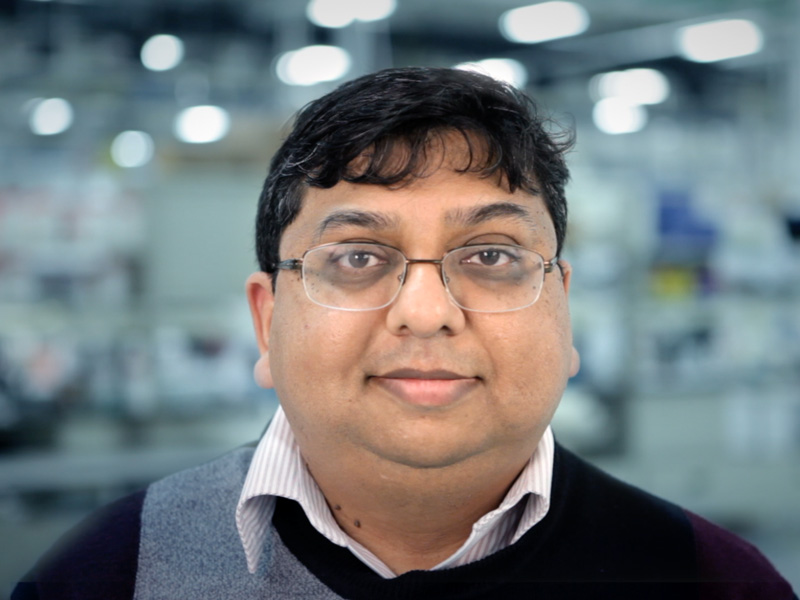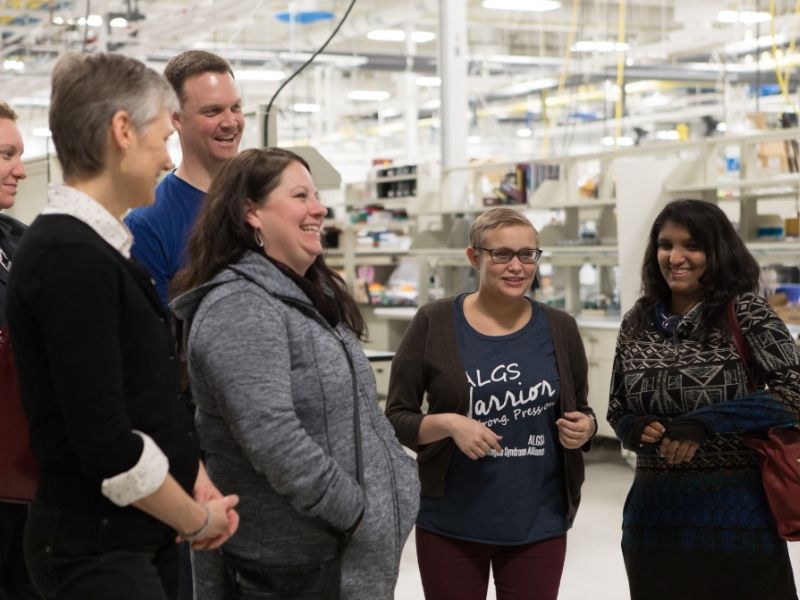One in 10 people are affected by a rare disease. You could live with one and not even know it.
For the United States, a disease is “rare” when it affects fewer than 200,000 people. As of today, around 7,000 rare diseases that have been identified.
Dr. David Pearce, president of Sanford Research, had the vision of creating a registry where researchers could learn more about these rare diseases. He wanted to give hope to patients by connecting them with researchers who study treatments for their particular disease. In 2010, Dr. Pearce established CoRDS — the Coordination of Rare Diseases at Sanford.
Looking for more stories like this? Subscribe to our newsletter
“Rare diseases deeply impact individuals and their families,” Dr. Pearce said. “When researchers, health care providers and individuals affected by rare diseases are connected through a central resource like CoRDS, we can look forward to real change in the field.”
While connecting people to information, CoRDS also collects information from people on a continuing basis. Alyssa Mendel, a senior clinical research specialist, works with CoRDS every day.
“When participants enroll with CoRDS, we want them to come back in each year to note any changes in symptoms, medications, and other pertinent medical information,” Mendel said. “This helps researchers to capture the progression of these conditions.”
How CoRDS is different
CoRDS is a free, international registry for all rare diseases and conditions, undiagnosed symptoms and unaffected carriers. The goal of CoRDS is to create a central resource of data on rare diseases to help accelerate research.
By making it free and international, CoRDS allows for more researchers and advocacy groups to access the data.
Mendel expects the CoRDS rare disease registry to grow significantly over the next five years because of a number of upcoming projects. CoRDS currently has data on patients from the United States and more than 60 other countries around the world.
Scientific research is the future of health care: Learn about Sanford Research
How researchers use CoRDS

Photo by Sanford Health
Sanford researcher Kamesh Surendran recently discussed the underreported, rare disease called Alagille syndrome at an advocacy group conference. This condition affects multiple organs in the body, most notably the heart and liver.
The Surendran Lab studies the effect of Alagille syndrome on the kidneys in mice models. In February 2018, Dr. Surendran had the opportunity to meet a group of patients affected by Alagille syndrome at Sanford Research in Sioux Falls, South Dakota. CoRDS had connected those patients to Dr. Surendran.
“This relationship between scientists and patients is something that has been missing in many ways,” Dr. Surendran said. “CoRDS helps to bridge that gap by solidifying that relationship.”
Their meeting in Sioux Falls offered Dr. Surendran a unique opportunity to connect with these patients before going to the Alagille Syndrome Alliance’s International Symposium in Cincinnati. There, he learned to better understand the disease’s effects in humans.
“The kidneys are not necessarily an area that doctors are focused on,” said Dr. Surendran. “Going to this meeting it was very clear that 50% of the patients had some kidney issues.”
Alagille syndrome conference
There were around 150 in attendance at that 2018 conference. Most were Alagille syndrome families.
Those with Alagille syndrome experience a high degree of disease variability. This means one patient could have more severe symptoms than someone else. Some patients have severe kidney disease while others have healthy kidneys.
One reason Dr. Surendran attended the conference was to find out more about this variability by collecting saliva samples. After successfully collecting samples, Dr. Surendran will be able to use them for whole-exome sequencing to test if there is a genetic explanation for the Alagille syndrome disease variability.
Whole-exome sequencing allows researchers to study the protein-coding regions in large amounts of DNA — an efficient way of identifying disease-causing mutations. This study was made possible through a Sanford Health Foundation grant.
Before CoRDS, a major hurdle was the lack of access to patients.
“The reason the Alagille Syndrome Alliance even came here and had their board meeting was because they saw Sanford was setting up this database for free,” Dr. Surendran said. “They wanted to see if it was for real or not. Since they were here, I was able to connect with them because I had been researching Alagille syndrome but not using human samples. It was the right match in many ways.”
‘A sense of hope’
Many patients do not understand what their rare disease is and what the underlying cause might be. Dr. Surendran said that as a scientist, it is one of his jobs to explain the rare disease to patients and take the time their doctors might not have.
“I think having this database is huge for rare diseases in general because one of the major issues is that lack of knowledge and a centralized place to go,” said Dr. Surendran.
Rare disease patients are “excited that there are actually people who are studying their disease,” he said. “It gives them a sense of hope that there will be something coming down the road. There are people interested in trying to further the knowledge so their lives will be better.”
CoRDS and Alagille syndrome
The Alagille Syndrome Alliance, which began in 1993 as a newsletter to two families, has grown to a nonprofit that serves families around the world looking for advice, advocacy and answers for their genetic conditions. The international board includes members from the United Kingdom, Canada and India, as well as the United States.
The ALGSA board migrated its data to CoRDS. The free registry offers the opportunity to create disease-specific questionnaires and connect to Sanford Research laboratories and specialists.
“CoRDS is so proactive about data collection and communication,” said Cindy Luxhoj, founder of the Alagille Syndrome Alliance. “CoRDS also provides our families and those affected by ALGS an opportunity to meaningfully contribute to research and move ALGS science forward toward a cure.”
Research on Alagille syndrome
“Meeting with him (Dr. Surendran) was fantastic,” Luxhoj said. “He had all these questions for us, and we had so many for him.”
Anna Laurent, who has Alagille Syndrome, agreed. She met with Dr. Surendran and also connected with others from ALGSA at the conference.
“In a world where your disease is so rare that you are 1 in 70,000, it was such a big moment to know that I was not alone,” Laurent said of her many experiences connecting with other families over the years. “When you meet these young warriors who are singing to ‘Frozen,’ singing Disney songs, and their parents are just starting on this journey, that’s the reason we need research.”
Researching rare diseases and bringing patients, scientists and physicians together is an integral part of what Sanford Health does.
“I see these families, and I see how they are searching for answers, and how their lives have been affected,” Dr. Pearce said. “We know we can make a difference, and every day we are asking questions and working with different groups to find answers.”
About ALGSA
The ALGSA is an international nonprofit based in Oregon. The group mobilizes resources, facilitates connections, promotes unity, and advocates for a cure. For more information, visit their website at alagille.org, or email organizers at alagille@alagille.org.
Learn more
- Man fundraises for research-study inspiration: his daughter
- Netflix ‘Diagnosis’ family searches for rare disease clues
- Family history: It’s an important part of your health
- Researcher feels urgency, knowing families who need help
…
Posted In Genetics, Leadership in Health Care, Research
